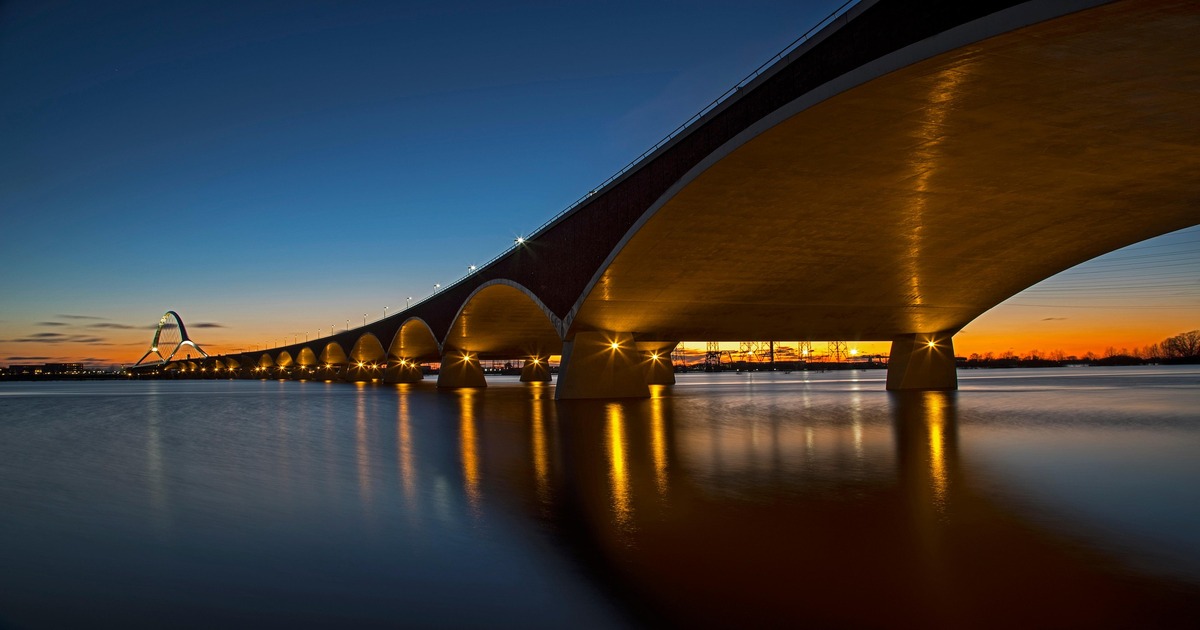Introduction
Cantilever bridges are a remarkable feat of structural engineering, used to span distances where support piers are impractical or impossible. From the iconic Forth Bridge in Scotland to modern roadway crossings, cantilever bridges demonstrate both architectural beauty and functional strength. In this blog, we’ll explore the types of cantilever bridges, their advantages and disadvantages, materials used, and common questions related to their design and performance.

What Is a Cantilever Bridge?
A cantilever bridge is a structure built using cantilevers—horizontal beams that are supported only on one end. These bridges project outward from supporting piers or abutments, allowing spans to cover wide distances without additional support underneath the center of the span.
What Is the Principle of a Cantilever Bridge?
The principle behind a cantilever bridge is based on moment equilibrium. Cantilever arms extend from piers in opposing directions, and the bridge’s load is balanced through a combination of tension in the upper portion and compression in the lower portion of the structure.
Types of Cantilever Bridges
Cantilever bridges can be classified into several types based on materials and construction techniques:
- Steel Truss Cantilever Bridge
Built with steel trusses, offering high strength and rigidity. - Concrete Cantilever Bridge
Often constructed using segmental techniques, these use precast or cast-in-place concrete. - Balanced Cantilever Bridge
Built segment-by-segment from the piers outward, maintaining balance during construction. - Simple Cantilever Beam Bridge
Basic form where one end of the beam is fixed, and the other is free or simply supported.
For more information, check out this guide on cantilever bridge types and examples.
Advantages of Cantilever Bridges
Cantilever bridges offer several benefits in modern infrastructure design:
- No need for falsework in the center span, making them ideal over rivers or valleys.
- Efficient in high-traffic areas, as construction can be done without closing the waterway or road beneath.
- Long-span capability, with spans reaching up to 550 meters.
- Suitable for rugged or inaccessible terrain, such as gorges and deep water.
According to EngineeringCivil.com, these bridges are particularly advantageous where scaffolding and temporary supports are not feasible.
Disadvantages of Cantilever Bridges
Despite their strengths, cantilever bridges come with some drawbacks:
- Complex and expensive to construct, especially in terms of design and materials.
- High maintenance, particularly in steel structures prone to corrosion.
- Stress concentration at joints and anchor points, requiring careful design and reinforcement.
- Limited suitability for certain spans, especially when extremely long distances must be covered.
Read more about the disadvantages and challenges of cantilever bridges.
What Are the Problems With Cantilever Bridges?
Some common engineering challenges include:
- Differential settlement of piers, leading to misalignment.
- Thermal expansion and contraction, especially in long spans.
- Fatigue in steel members due to cyclic loading.
- Difficulty in inspection and retrofitting due to structural complexity.
These issues demand rigorous quality control during construction and periodic structural health monitoring.
What Are the Disadvantages of a Cantilever Structure?
In a broader structural context, cantilever designs—whether in bridges, buildings, or balconies—often:
- Require greater structural depth.
- Demand precise load calculations.
- Are more susceptible to deflection and vibration if not correctly engineered.
Can Cantilever Bridges Hold a Lot of Weight?
Yes, cantilever bridges can carry substantial loads, depending on their materials and design. The use of steel trusses or prestressed concrete allows them to withstand both static and dynamic loads, including heavy vehicular traffic and environmental stresses like wind and earthquakes.
What Is the Maximum Span of a Cantilever Bridge?
The maximum span of a cantilever bridge varies by design. Notably:
- The Forth Bridge in Scotland spans 521 meters (1,710 feet).
- Some modern designs can achieve spans up to 550 meters using steel or prestressed concrete.
However, beyond this range, suspension or cable-stayed bridges become more efficient.
How Long Can a Cantilever Bridge Last?
With proper maintenance, cantilever bridges can last 75 to 100 years or more. Many historical cantilever bridges built in the 19th and 20th centuries are still in service today, thanks to high-quality materials and proactive maintenance strategies.
How Much Cantilever Is Allowed?
In engineering design, the allowable cantilever length is typically 1/3 to 1/4 of the total span, depending on:
- Structural material (steel, concrete)
- Load distribution
- Support conditions
- Codes and standards
Each project must evaluate its own safety factors and load requirements.
What Is the Strongest Type of Bridge?
The arch bridge is often cited as the strongest in terms of load-bearing capacity due to its compression-based structure. However, cantilever bridges are among the strongest for long spans without support in the middle, offering excellent strength-to-span ratios in appropriate use cases.
What Are 4 Types of Bridge Structures?
The four primary bridge types include:
- Beam Bridges – Simple spans supported at each end.
- Arch Bridges – Use curved structures to distribute weight.
- Suspension Bridges – Utilize cables suspended from towers.
- Cantilever Bridges – Built using projecting arms supported on only one end.
Each serves different structural and environmental needs.
Cantilever Bridge Materials
Materials used in cantilever bridges typically include:
- Steel – Preferred for trusses and large spans due to high tensile strength.
- Prestressed Concrete – Used for segmental bridges and urban flyovers.
- Reinforced Concrete – For shorter spans or budget-conscious projects.
Material choice affects cost, maintenance, and design lifespan.
Cantilever Bridge Examples
Notable cantilever bridges around the world include:
- Forth Bridge (UK) – A UNESCO World Heritage Site.
- Quebec Bridge (Canada) – World’s longest cantilever span at 549 meters.
- Howrah Bridge (India) – A heavily used cantilever bridge without nuts or bolts.
These structures showcase the versatility and durability of cantilever designs.
Cable-Stayed Bridge Advantages and Disadvantages (Comparison)
Though similar in purpose, cable-stayed bridges differ from cantilever bridges in design and function:
Advantages:
- Lighter structure.
- Visually striking.
- Faster construction for moderate spans.
Disadvantages:
- Less effective for extremely long spans.
- Higher tension loads require robust anchoring.
Cable-stayed bridges may be preferred over cantilever bridges in certain urban and mid-span applications.
Final Thoughts
Cantilever bridges remain a critical option in modern infrastructure, especially in regions where intermediate supports are impractical. Understanding their types, materials, advantages, and limitations allows engineers and planners to choose the best design for a given context.

